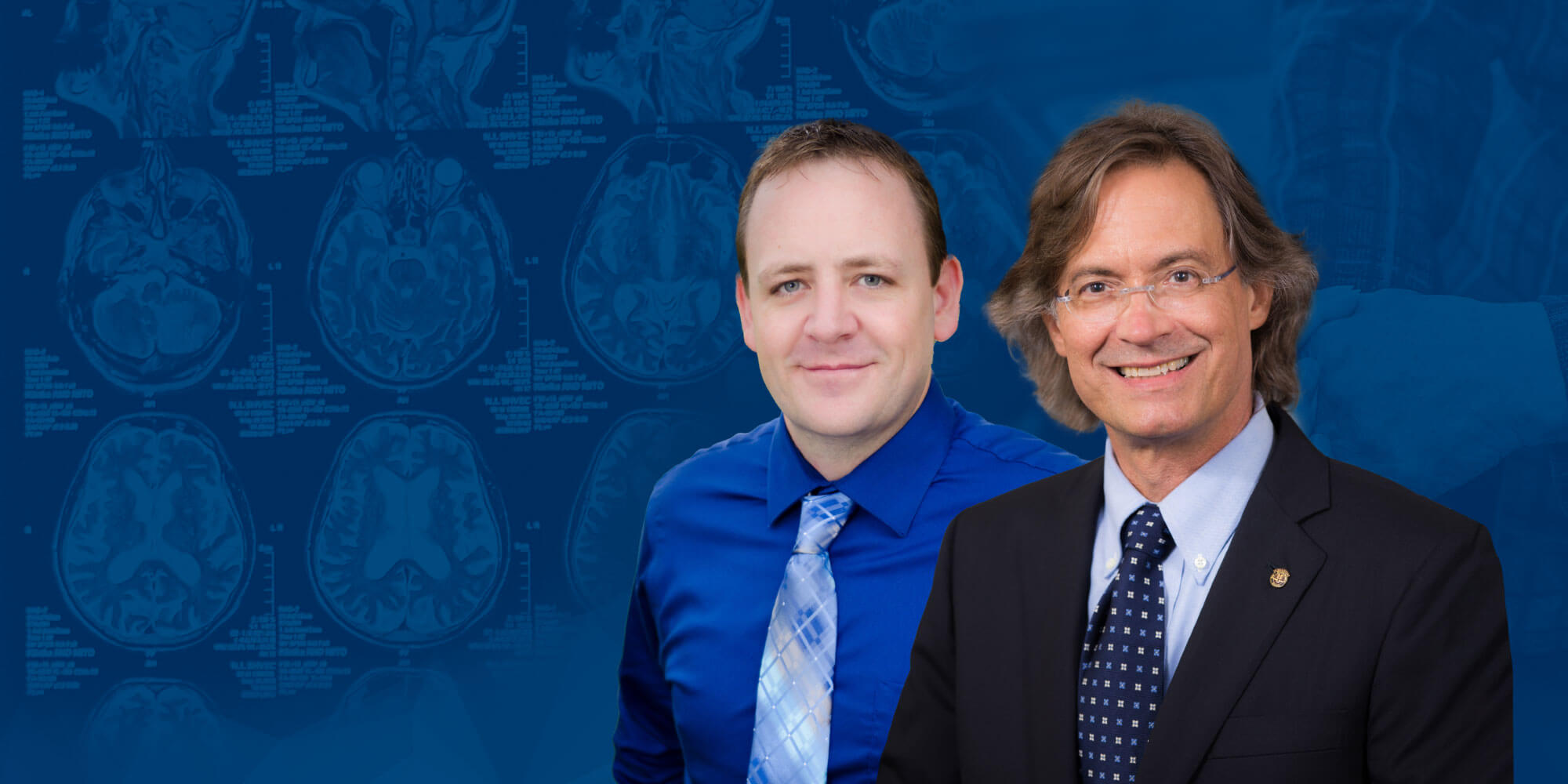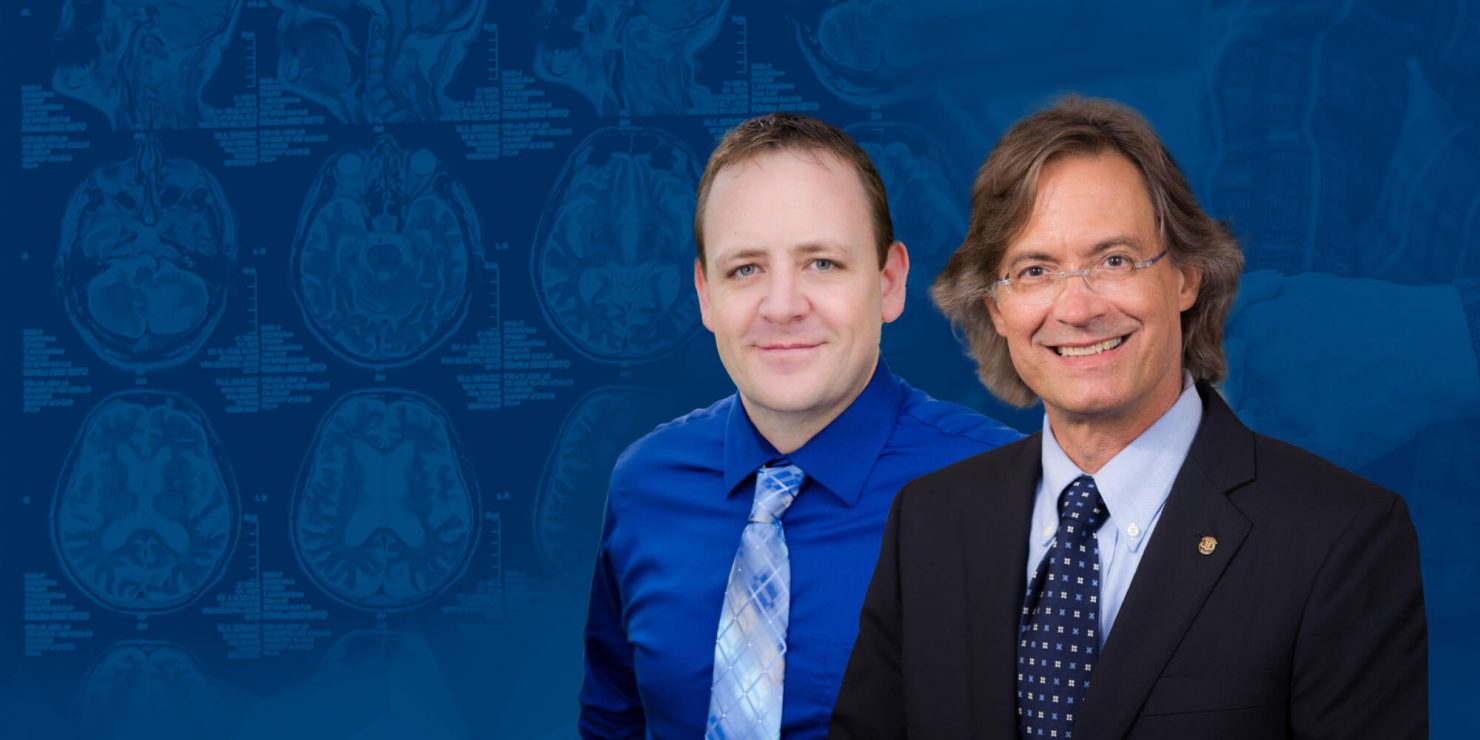
From left: Kevin Otto, Ph.D., professor and senior associate chair in the J. Crayton Pruitt Family Department of Biomedical Engineering, and Mark Orazem, Ph.D., Distinguished Professor in the Department of Chemical Engineering
A public-private UF collaboration seeks to optimize clinical outcomes by pumping up the volume through novel neuroprostheses fabrication
Every audiophile long ago celebrated the quantum leap from stereo to multichannel for their immersive listening experience. Now, through a $4.5 million award from the National Institutes of Health (NIH), two researchers in the Herbert Wertheim College of Engineering are working to similarly advance the therapeutic intervention known as “neuromodulation,” fine-tuning electronic stimulation inside the body by creating next-generation electrodes that will deliver the equivalent of high fidelity for the central nervous system.
The project is funded by a U01 grant, an NIH Cooperative Agreement Award that has ambitious, well-defined deliverables in the neuromodulation field that portend groundbreaking therapeutics for nervous system (CNS) diseases or injuries like Parkinson’s Disease and essential tremor, as well as stroke, Obsessive Compulsive Disorder, Tourette’s Syndrome and neuropsychiatric conditions.
“Some neuroprostheses use hard-wired, chronically implanted electrical microstimulation devices that interact directly with the nervous system,” said Kevin Otto, Ph.D., professor and senior associate chair in the J. Crayton Pruitt Family Department of Biomedical Engineering, who is co-leading the four-year project in partnership with Duke University, the University of Texas-Dallas and NeuroNexus Technologies.
“If your natural sensory encoding is eroded through injury, disease, or aging, electrodes can sometimes do a better job of interacting with the body through the spine, brain or peripheral nerves than external devices like eyeglasses or hearing aids. And like those devices, they need a prescription that is tailored to your specs, then later modified. But finding the right formula for the modification of the neuromodulation prescription requires a much heavier lift than changing an eyeglass prescription. We’re doing it by building a complete mathematical representation to track every bit of current from amplifier to the neuron.”
Historically, the issue of scale — the size of the electrodes — presents the greatest challenge to neural stimulation. Neuromodulation devices are analogous to the pixel capacity of a camera, where the resolution of photos is limited by the number of pixels. The smaller the pixel, the more capacity for higher resolution. Accordingly, electrode size dictates the specificity of the stimulation that strategically targets the neurons. This project will seek to create very small electrodes, called “ultra-microelectrodes.”
Through a process called “spatiotemporal programming,” the project team can manipulate the route of currents by stimulating the channels in the electrodes. And, like a speaker system, the more channels the better.
“How sound waves operate for your hi-fi is analogous to neuromodulation,” Dr. Otto explained. “Electrical currents do the same thing and travel the same way. The things that get in the way of sound also impede electricity. And like your stereo system, we can move things around to optimize our version of surround sound with our modeling. Except we’ll have 32 channels, and maybe many more.”
NeuroNexus Technologies, an Ann Arbor, Mich., developer of neural interface devices led by Daryl Kipke, is partnering with the University of Florida (UF) engineers to integrate novel fabrication into the ultra-micro electrodes. These thin-film devices are akin to computer microchips and are produced through the same process of photolithography.
UF enjoys eminent electrochemistry expertise in Mark Orazem, Ph.D., a Distinguished Professor in the Department of Chemical Engineering, who will provide a detailed look at how electrodes work in the brain.
“My focus is to understand the properties of our electrodes and to use those properties to develop models to show how the stimulation goes to the neurons,” Dr. Orazem said. “We specialize in electrochemical impedance spectroscopy, a time-tested evaluation of current flow that gives us a good picture of the charging characteristics of the current. We conduct in– vitro measurements to see how the current behaves, then develop models to interpret the impedance we observe that provides parameters for more advanced stimulations. And our goal is to keep the chemistry safe, both for the potential patient and for the device.”
Identifying the therapeutic sweet spot based on these findings will be a major objective of the project. Anticipating some post-fabrication adjustment — perhaps changing the electrode coatings to facilitate the kind of interaction desired — Stuart Cogan, Sc.D., a world-renowned expert on electrode coatings at the University of Texas-Dallas, has been recruited to develop innovative coating options they hope will maximize performance at the incredibly small scale.
Warren Grill, Ph.D., Edmund T. Pratt, Jr. School Distinguished Professor of Biomedical Engineering at Duke University, contributes computational modeling that will give the UF-led team a mathematical picture of what neuromodulation looks like in the brain, the likely effect of the stimulation as it spreads out in space and, of primary interest to the researchers, the potential hazards posed by this new approach to the neuroprostheses.
“As you try to increase the resolution by making the electrodes smaller, it’s more difficult to send the required amount of energy through the channels without the potential for overload,” Dr. Otto said. “If we need a fire-hose volume of water but you use a garden hose to dispense it, bad things will happen to the hose. This is where we are. How many hoses do we need with how much water going through each to strategically put out the fire? It’s a loop of continual experimentation among our team to make the interfaces smaller, more effective with more densely packed channels. A delicate balance between efficacy and safety.”
Their project outcomes will also provide an overdue push to redefine the modern-day limits of electrode size, updating parameters that are still largely governed by outmoded, less sophisticated macroelectrode technology.
“We have exceeded the models that were developed to indicate what we can do with fabrication and in the application space according to regulatory policy,” Dr. Otto said. “These agencies are willing to reach further into the dark if we simply provide a flashlight. We aim to get the data to do just that, and UF is the ideal collaborative environment to lead the way.”
